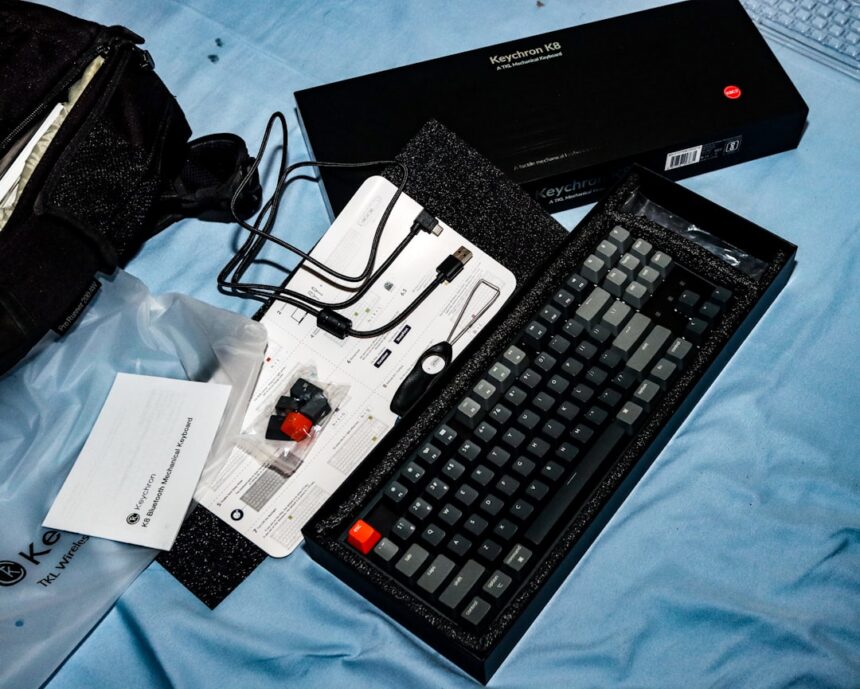The phenomenon of technology theft during the Soviet era represents a complex interplay of espionage, innovation, and geopolitical rivalry. As the Cold War unfolded, the Soviet Union sought to bolster its technological capabilities to compete with the West, particularly the United States. This quest for technological parity led to a systematic approach to acquiring advanced technologies through various means, including espionage, industrial theft, and cyber operations.
The implications of these actions were profound, influencing not only the military capabilities of the Soviet Union but also its economic landscape and international relations. The urgency behind Soviet technology theft was driven by a desire to close the gap with Western powers. The Soviet leadership recognized that technological advancement was crucial for national security and economic growth.
As a result, they implemented strategies that ranged from traditional espionage to more sophisticated cyber operations. This article delves into the methods employed by the Soviets to acquire technology, the consequences of these actions, and the ongoing implications for global security and diplomacy.
Key Takeaways
- Soviet technology theft involved various methods such as espionage, cyber theft, and economic and industrial espionage.
- Espionage and spying played a significant role in the theft of Soviet technology, with agents infiltrating various industries and government agencies.
- Cyber theft and hacking were also utilized by the Soviet Union to steal technological secrets and intellectual property from other countries.
- The impact of Soviet technology theft was felt in both military and defense sectors, as well as in economic and industrial consequences.
- Efforts to combat Soviet technology theft included legal and diplomatic ramifications, as well as ongoing efforts to strengthen cybersecurity and protect intellectual property.
Methods of Soviet Technology Theft
Soviet technology theft was characterized by a diverse array of methods that evolved over time. Initially, traditional espionage played a significant role in acquiring sensitive information. The KGB, the Soviet Union’s main security agency, was instrumental in infiltrating Western companies and research institutions.
Agents were often tasked with stealing blueprints, technical documents, and even prototypes of advanced technologies. This approach allowed the Soviets to gain insights into cutting-edge developments in fields such as aerospace, electronics, and military hardware. As the Cold War progressed, the methods of technology theft became increasingly sophisticated.
The Soviets began to leverage industrial espionage, where they would recruit scientists and engineers from Western countries to defect and share their knowledge. This tactic not only provided access to proprietary information but also facilitated the establishment of networks that could be exploited for further technological gains.
Espionage and Spying

Espionage was a cornerstone of Soviet efforts to acquire technology from the West. The KGB employed a range of tactics to infiltrate organizations and gather intelligence. One notable method involved the recruitment of insiders who had access to sensitive information.
These individuals were often motivated by ideological beliefs or financial incentives, making them valuable assets in the quest for technological superiority. The KGB’s ability to cultivate relationships with key personnel allowed them to obtain critical data that would otherwise remain inaccessible. Moreover, the Soviets utilized a network of agents and informants across various sectors, including defense contractors and research institutions.
This extensive web of espionage activities enabled them to monitor advancements in technology closely. The KGB’s operations were not limited to human intelligence; they also employed signals intelligence (SIGINT) to intercept communications between Western governments and corporations. By piecing together information from various sources, the Soviets could gain a comprehensive understanding of technological developments and adapt their strategies accordingly.
Cyber Theft and Hacking
| Year | Number of Cyber Theft Incidents | Number of Hacking Incidents |
|---|---|---|
| 2018 | 500,000 | 300,000 |
| 2019 | 600,000 | 400,000 |
| 2020 | 700,000 | 500,000 |
With the advent of the digital age, cyber theft emerged as a new frontier for Soviet technology acquisition. The transition from traditional espionage to cyber operations marked a significant shift in tactics. The Soviet Union recognized the potential of computer networks as a means to access sensitive information without physical infiltration.
This shift allowed them to target a broader range of organizations, including government agencies, defense contractors, and private companies. Cyber operations conducted by Soviet agents often involved sophisticated hacking techniques designed to breach secure systems and extract valuable data. These operations were characterized by their stealth and precision, allowing the Soviets to remain undetected while siphoning off critical technological information.
The use of malware and phishing attacks became commonplace as they sought to exploit vulnerabilities in Western cybersecurity measures. This new form of technology theft not only expanded the scope of their operations but also raised concerns about the security of sensitive information in an increasingly interconnected world.
Economic and Industrial Espionage
Economic and industrial espionage played a pivotal role in the Soviet Union’s strategy for technological advancement. The Soviets understood that acquiring proprietary technologies from Western companies could significantly enhance their industrial capabilities. To this end, they targeted industries such as aerospace, telecommunications, and energy production, where advancements could yield substantial economic benefits.
One notable example of industrial espionage involved the acquisition of advanced manufacturing techniques and processes. By stealing trade secrets related to production methods, the Soviets were able to improve their own manufacturing capabilities without investing in costly research and development. This approach not only accelerated their technological progress but also allowed them to compete more effectively in global markets.
The ramifications of such actions extended beyond immediate gains; they contributed to a broader pattern of economic competition between East and West.
Impact of Soviet Technology Theft

The impact of Soviet technology theft was multifaceted, affecting various aspects of both Soviet society and international relations. On one hand, successful acquisition of advanced technologies bolstered the Soviet military-industrial complex, enabling it to develop sophisticated weaponry and defense systems that could rival those of the West. This technological edge provided a sense of security for Soviet leaders but also fueled an arms race that heightened tensions between superpowers.
On the other hand, the reliance on stolen technology created inherent vulnerabilities within the Soviet system. While they may have gained immediate advantages through espionage and theft, these actions often stifled genuine innovation within their own scientific community. The focus on acquiring foreign technologies detracted from investments in domestic research and development, leading to stagnation in certain sectors over time.
As a result, while technology theft provided short-term benefits, it ultimately hindered long-term growth and sustainability.
Military and Defense Consequences
The military consequences of Soviet technology theft were profound and far-reaching. By acquiring advanced military technologies through espionage, the Soviets were able to enhance their defense capabilities significantly. This included advancements in missile technology, aircraft design, and nuclear weapons development.
The ability to replicate or improve upon Western military innovations allowed the Soviet Union to project power more effectively on the global stage. However, this reliance on stolen technology also had strategic implications. The Soviets often found themselves in a precarious position where they had to balance their military ambitions with economic realities.
While they could develop sophisticated weaponry through espionage, maintaining these systems required substantial resources that strained their economy. This paradox ultimately contributed to internal pressures that would later play a role in the dissolution of the Soviet Union.
Economic and Industrial Consequences
The economic consequences of Soviet technology theft were equally significant. By acquiring advanced technologies from Western nations, the Soviets aimed to modernize their industries and improve productivity. However, this approach came with inherent risks.
The reliance on stolen technologies created an environment where innovation was stifled within domestic industries. Instead of fostering homegrown advancements, the focus shifted toward replicating foreign technologies.
As Western nations tightened export controls and improved their own cybersecurity measures, access to critical technologies became increasingly restricted for the Soviets. This shift forced them to confront the limitations of their approach and highlighted vulnerabilities within their economic framework. Ultimately, while technology theft provided short-term gains, it failed to establish a robust foundation for sustained economic growth.
Legal and Diplomatic Ramifications
The legal and diplomatic ramifications of Soviet technology theft were profound and far-reaching. As Western nations became aware of the extent of Soviet espionage activities, tensions escalated between superpowers. Diplomatic relations were strained as accusations of industrial espionage surfaced, leading to retaliatory measures such as sanctions and export controls aimed at curbing technology transfer.
Furthermore, legal frameworks began to evolve in response to these challenges. Countries implemented stricter intellectual property laws and enhanced cybersecurity measures to protect sensitive information from foreign adversaries. The implications extended beyond immediate diplomatic relations; they shaped international norms regarding technology transfer and intellectual property rights that continue to influence global trade dynamics today.
Efforts to Combat Soviet Technology Theft
In response to the pervasive threat posed by Soviet technology theft, Western nations undertook concerted efforts to combat these activities. Intelligence agencies ramped up counterintelligence operations aimed at identifying and neutralizing espionage efforts by Soviet agents. Enhanced security protocols were implemented within government agencies and private companies to safeguard sensitive information from unauthorized access.
Additionally, international cooperation among allies became crucial in addressing the challenge posed by Soviet technology theft. Information sharing between intelligence agencies allowed for a more comprehensive understanding of Soviet tactics and strategies. This collaborative approach not only strengthened defenses against espionage but also fostered a sense of unity among Western nations in their efforts to counteract Soviet influence.
Conclusion and Future Implications
The legacy of Soviet technology theft continues to resonate in contemporary discussions about cybersecurity and international relations. While the Cold War has ended, concerns about state-sponsored cyber operations persist as nations grapple with evolving threats in an increasingly interconnected world. The lessons learned from the Soviet experience underscore the importance of safeguarding sensitive information and fostering innovation within domestic industries.
As nations navigate the complexities of modern geopolitics, understanding the historical context of technology theft remains essential. The interplay between espionage, economic competition, and technological advancement will continue to shape global dynamics for years to come. In an era where information is power, vigilance against potential threats will be paramount in ensuring national security and fostering sustainable economic growth in an ever-evolving landscape.
In the intricate world of Cold War espionage, the Soviet Union employed a variety of methods to acquire Western technology, often blurring the lines between intelligence gathering and outright theft. These tactics were part of a broader strategy to bridge the technological gap between the East and the West. For a deeper dive into the clandestine operations and the impact of these activities on global technological advancements, you can explore a related article on Soviet technology theft methods by visiting In The War Room. This resource provides a comprehensive overview of the espionage techniques used and their implications during the Cold War era.
WATCH THIS 🤯How the KGB Stole America’s Future
FAQs
What were the methods used by the Soviet Union to steal technology?
The Soviet Union used a variety of methods to steal technology, including espionage, cyber theft, and exploiting business relationships.
Did the Soviet Union use espionage to steal technology?
Yes, the Soviet Union extensively used espionage to steal technology from other countries. This included recruiting spies, infiltrating research facilities, and obtaining classified information.
How did the Soviet Union engage in cyber theft for technology theft?
The Soviet Union engaged in cyber theft by hacking into computer systems and networks to steal technological information and intellectual property.
Did the Soviet Union exploit business relationships to steal technology?
Yes, the Soviet Union exploited business relationships to gain access to technology and intellectual property. This included forming partnerships with foreign companies and then using those relationships to gain access to proprietary information.
What were the consequences of Soviet technology theft?
The consequences of Soviet technology theft included economic and technological damage to the countries from which technology was stolen, as well as contributing to the Soviet Union’s own technological advancements.




